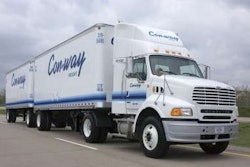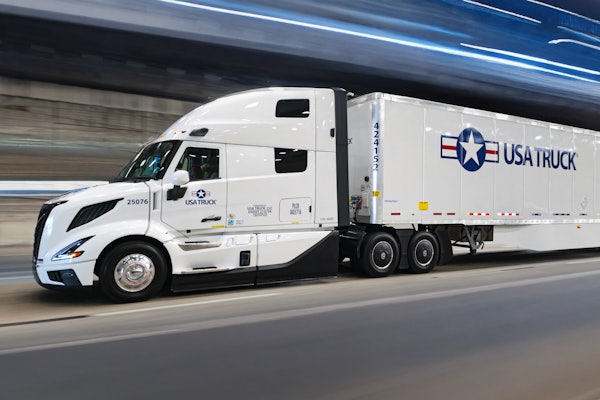The American Trucking Associations on Wednesday, April 1, announced its strong support for the Safe and Efficient Transportation Act of 2009 (H.R. 1799). The legislation — which was introduced by U.S. Reps. Michael Michaud (D-Maine) and Jean Schmidt (R-Ohio) on Monday, March 30 — would allow states to authorize the operation of more efficient commercial trucks, which ATA says would result in safer highways, cleaner air and less costly freight transportation.
The bill authorizes states to allow the operation of trucks on the Interstate Highway System with a gross weight of 97,000 pounds; current law limits the weight of five-axle trucks traveling on interstates to 80,000 pounds. The legislation requires that trucks operating above 80,000 pounds must add a sixth axle to compensate for the extra weight; the extra axle would add two more brakes to help prevent an increase in stopping distances while avoiding additional pavement damage.
ATA says the operation of this new, more efficient vehicle would allow trucking companies to deliver freight while making fewer trips, resulting in a reduction in the number of truck-involved crashes, less fuel use – and thus reduced emissions and carbon – and less congestion on crowded highways.
A recent study by the American Transportation Research Institute found that the 97,000-pound truck is 17 percent more fuel-efficient on a ton-mile basis than a truck with a gross weight of 80,000 pounds; this means 17 percent less carbon output and similar reductions in other pollutants. “As part of our Sustainability Initiative, ATA supports a number of reforms to federal truck size and weight regulation,” says Bill Graves, ATA president and chief executive officer. “The use of more efficient trucks, such as those allowed under the bill, will significantly reduce the trucking industry’s carbon output.”
Fewer miles traveled also means less pavement damage, lowering highway maintenance costs, according to ATA. While most interstate bridges are fully capable of handling the additional weight of these vehicles, some bridges – particularly those off the interstate system – would have to be strengthened or replaced on an accelerated cycle in order to accommodate the vehicles. ATA points out that there are no mandates in the bill; the highways on which this vehicle would operate would be chosen by the individual states that choose to authorize their use, and states would be empowered to route these vehicles in a way that minimizes any additional costs.
Nonetheless, the bill recognizes that additional bridge costs are possible, and vehicles authorized to operate under this legislation would be required to pay an additional fee, which ATA supports, and which would be dedicated to bridge investments in those states that authorize their use. The bill requires states to report safety and infrastructure cost impacts to U.S. Transportation Secretary Ray LaHood, who is authorized to discontinue operations in a state if safety problems are detected.











